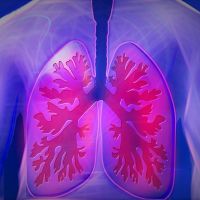There have been multiple advances in the management of acute respiratory distress syndrome (ARDS), but the temporal trends in ARDS-related mortality are not well known. Conservative fluid management strategy for ARDS, in particular, has been extensively studied and is increasingly being used in clinical practice. However, it is largely unknown whether this changing practice parallels with the improvement in survival outcome.
Researchers performed a secondary analysis of randomised controlled trials conducted by the Acute Respiratory Distress Syndrome Network (ARDSNet) from 1996 to 2013. The aim was to examine the trends in mortality in ARDS patients over time and to explore the roles of daily fluid balance and ventilation variables in those patients.
The researchers observed an improvement in the mortality rate in the critically ill patients enrolled in the ARDSNet trials. The decline in mortality rate and increased occurrence rate of home on unassisted breathing (UAB) over this period paralleled with the use of a conservative fluid management strategy, lower tidal volume and plateau pressure, and higher positive end-expiratory pressure (PEEP). In addition, the effect of year on mortality decline disappeared after adjustment for daily fluid balance, PEEP, tidal volume, and plateau pressure.
ARDS is a type of acute inflammatory lung injury in the absence of cardiac causes of pulmonary oedema. The leading causes of ARDS include pneumonia, sepsis, trauma, and massive transfusions of blood products. Depending on the severity of ARDS, mechanical ventilation as well as adjunctive therapies are life-saving interventions.
ARDSNet trials have had significant impact on mechanical ventilation practice, resulting in improved management of ARDS. Of note, these studies did not investigate the possible modifiable factors such as daily fluid balance which could improve survival outcome.
This new analysis included individual patient data (n = 5,159) from nine RCTs conducted by the ARDSNet, excluding the Late Steroid Rescue Study trial. The crude mortality rate decreased from 35.4% in 1996 to 28.3% in 2013. By adjusting for the baseline Acute Physiology and Chronic Health Evaluation III, age, ICU type, and admission resource, patients enrolled from 2005 to 2010 and those enrolled after 2010 were associated with lower risk of death as compared to those enrolled before 2000. There were significant trends of declines in daily fluid balance, tidal volume, and plateau pressure and an increase in positive end-expiratory pressure over the 17 years.
The results of this analysis are consistent with a previous analysis of ARDSNet trials (1996–2005) by Erickson et al. where the ARDS-related mortality rate declined from 35% to 26% over a period of 10 years, and this trend persisted even after adjustment for baseline characteristics. However, they did not assess the temporal trend in daily fluid balance.
It should be noted that in the new analysis, some important interventions for ARDS patients such as curarisation, extracorporeal membrane oxygenation, and prone positioning were not included, which might also influence the mortality outcome.
Source: Critical Care Medicine
Image credit: iStock



























